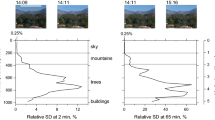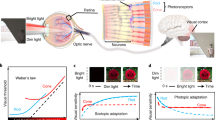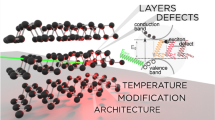Abstract
THE selenium cell, as a light-sensitive element, has always been held to have the inherent drawbacks of inertia and lag, and therefore to respond too sluggishly to changes in light intensity, and to return to its normal low conductivity much too slowly when the illumination to which it has been subjected is cut off. Several forms of photometer are now in use in which selenium or photo-electric cells are employed, and were selenium more certain and more prompt in action it would offer certain advantages over the photo-electric cell.
This is a preview of subscription content, access via your institution
Access options
Subscribe to this journal
Receive 51 print issues and online access
$199.00 per year
only $3.90 per issue
Buy this article
- Purchase on Springer Link
- Instant access to full article PDF
Prices may be subject to local taxes which are calculated during checkout
Similar content being viewed by others
Author information
Authors and Affiliations
Rights and permissions
About this article
Cite this article
BAKER, T. The Sensitivity of Selenium Cells. Nature 117, 858–859 (1926). https://doi.org/10.1038/117858c0
Published:
Issue Date:
DOI: https://doi.org/10.1038/117858c0
Comments
By submitting a comment you agree to abide by our Terms and Community Guidelines. If you find something abusive or that does not comply with our terms or guidelines please flag it as inappropriate.



